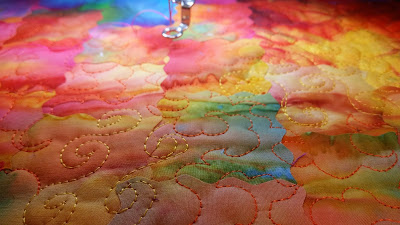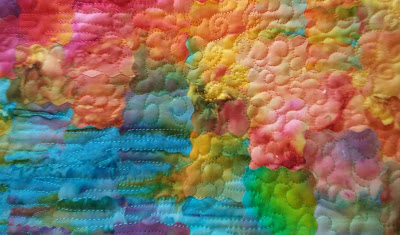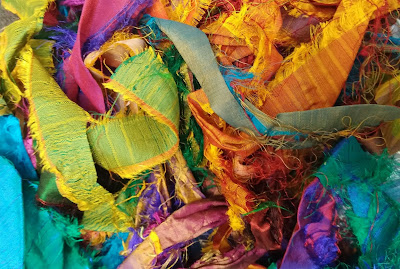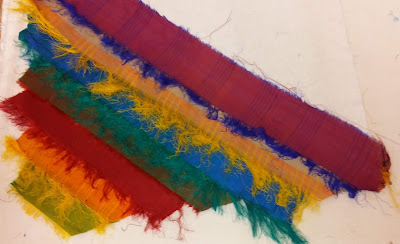Blog 439
Happy
Mother’s Day! I have been invited to a family BBQ and I will certainly enjoy
the company of those attending. I feel privileged to be a mother; it’s one of
the best experiences in my life.
I have made
some progress with the colourful panel over the last few days. I removed it
carefully from the release paper and placed it onto cotton low-loft wadding. As
all the fabrics are backed with Bondaweb, I was able to stick the panel in
place with an iron and this meant that I didn’t need any pins. The colourful
patches were put together to create a background fabric so, before doing any
applique over the top, I decided to add texture with stitch, using rayon
threads. The texturing adds interest but it also helps to secure the individual
pieces of fabric, a necessary step in this process (the alternative is to cover
the lot with tulle but I don’t like that effect). I used different fee motion
patterns over the surface.
Panel on
wadding
Free
motion quilting
Rayon
threads

Detail 1

Detail 2

Completed
background
The next
decision was how to use the prepared background. In my book ‘Dual Image Applique’
I used silhouettes to create wall hangings (image below). I have always liked
the strong contrast created when placing a dark fabric against a colourful background.
Although I have long since got rid of many of my original patterns, I drafted a
frame in which to work and drew up a similar image to fit the size of the panel.
Here is the design process from framework to pencil image to creating ‘holes’
which will be cut out to the final pattern. The ‘holes’ are the areas that will
be cut out to reveal the background fabric.
Silhouetted
panel
Framework
Floral
design
Creating
‘holes’
‘Holes’
detail
Completed
pattern
Next
week I will outline how I have continued with this project; I have an idea!!


















































